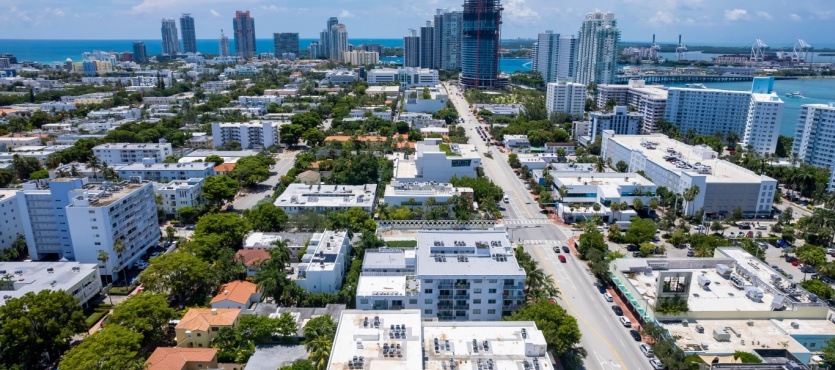As commercial buildings age, it becomes essential to ensure they continue to meet safety and structural standards. This is why 30, 40, and 50-year recertifications are required in many areas, especially in places with a high number of older structures, like Florida. These inspections play a crucial role in maintaining building safety, extending the lifespan of properties, and complying with local regulations. For building owners and property managers, understanding the importance of these recertifications is key to preserving property value, ensuring the well-being of occupants, and avoiding costly repairs.
Ensuring Safety and Structural Integrity
The primary goal of 30, 40, and 50-year recertification inspections is to assess the safety and structural integrity of older commercial buildings. Over time, buildings experience wear and tear that can compromise essential components such as electrical systems, plumbing, structural foundations, and the overall envelope of the building. Left unchecked, these issues can lead to dangerous conditions, including the risk of structural collapse, fire hazards, and water damage.
During these inspections, a licensed engineer evaluates the building to identify any weaknesses or deficiencies that may affect safety. By detecting and addressing these issues early on, building owners can make necessary repairs to bring the structure up to current codes and standards, ensuring a safe environment for tenants, employees, and customers.
Complying with Local Regulations
Many regions, particularly those with stringent building codes like South Florida, have established mandatory recertification requirements for commercial buildings. Typically, these regulations stipulate that buildings undergo a comprehensive inspection after 30, 40, or 50 years, with additional inspections every 10 years thereafter. Failing to comply with these regulations can lead to fines, penalties, and in severe cases, the closure of the building until it meets the required standards.
In Florida, for example, the 40-year recertification process was instituted in response to the state’s unique environmental challenges, such as high humidity, salt exposure, and hurricane risks. These factors can accelerate the degradation of building materials, making periodic inspections critical to ensuring that structures remain in good condition. By adhering to these requirements, building owners not only avoid regulatory repercussions but also demonstrate a commitment to safety and responsibility.
Extending Building Lifespan and Reducing Long-Term Costs
Regular recertifications provide an opportunity to identify and address maintenance issues that, if left unaddressed, could lead to more extensive and costly repairs in the future. Through these inspections, engineers can pinpoint problems early on, such as cracks in the foundation, corrosion in steel components, or outdated electrical systems, allowing building owners to take preventive measures.
When building owners address these issues promptly, they can often extend the lifespan of their properties. For instance, repairing minor structural damage today can prevent it from worsening into a major issue that requires significant renovations or even reconstruction later. By investing in regular inspections and maintenance, building owners can reduce long-term costs associated with emergency repairs and property deterioration.
Enhancing Property Value and Marketability
A well-maintained, up-to-date building is more attractive to potential buyers, tenants, and investors. Regular recertifications help ensure that commercial properties remain in compliance with current building codes and safety standards, which can significantly enhance their value. Buildings that are consistently maintained and certified are also more marketable, as prospective tenants and buyers are increasingly aware of the importance of building safety and quality.
For property owners looking to lease or sell their buildings, having a record of regular recertifications and a history of proactive maintenance can serve as a strong selling point. In a competitive real estate market, demonstrating that a building is well-cared-for and compliant with local safety standards can make it more appealing to high-quality tenants and buyers.
Streamlining the Recertification Process
While building owners can manage recertification on their own by hiring separate engineers and contractors, working with a full-service construction company like Perillo Construction can simplify the process. Perillo Construction is not an engineering firm, but they work closely with licensed engineers to oversee the entire recertification process, from inspection to repair. By coordinating with engineers and handling necessary updates, they ensure that the building is inspected, any required repairs are completed, and the recertification is secured in an efficient and timely manner.
This all-in-one approach minimizes the need for building owners to manage multiple service providers, reducing the time and stress associated with recertification. With experienced professionals overseeing each step, building owners can have peace of mind knowing their property is in capable hands.
A Proactive Approach to Building Maintenance
Regular 30, 40, and 50-year recertifications are essential for maintaining the safety, compliance, and value of commercial buildings. By investing in these periodic inspections, building owners can ensure their properties remain safe for occupants, comply with local regulations, and avoid costly repairs. Working with a comprehensive construction partner like Perillo Construction makes the process more manageable, allowing building owners to focus on running their businesses while professionals handle the details.
To learn more about how Perillo Construction can assist with your recertification needs, visit their Contact page.

